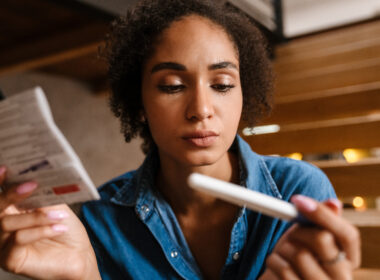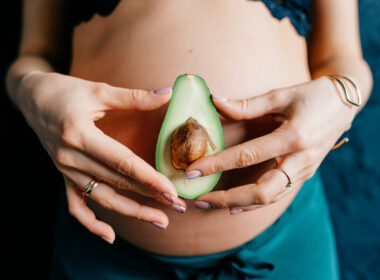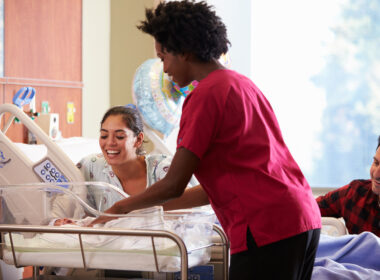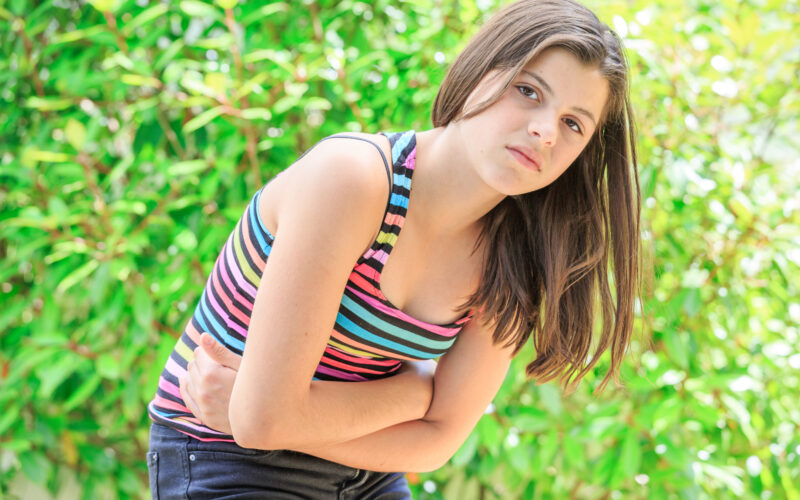“We shouldn’t be normalizing pain.” So says Dr. Jessica Shim, a pediatric and reproductive gynecologist and endometriosis specialist at Boston Children’s Hospital. She offered this comment in a recent Washington Post article about endometriosis and teens. While the majority of women with endometriosis aren’t diagnosed until adulthood— often after other misdiagnoses or being told nothing was wrong— the Post article explored whether the inflammatory disease may start during the teen years and manifest as painful periods.
My painful periods started with my first cycle, at age 13. The pain was so intense that I was distraught at the thought of getting a period every month for most of the rest of my life. I finally looked for some help at age 17, and it came in the form of the birth control pill.
I didn’t get any diagnosis other than “irregular cycles” and “heavy and painful periods.” Still, I didn’t question the gynecologist. The pill helped immensely with my symptoms, and, unlike many women, I didn’t experience any negative side effects from it. Only after I decided to go off the pill and learned to chart my cycle 10 years later, was I finally diagnosed with PCOS. A little later, when my menstrual pain returned, my NaPro doctor (fortunately also well-trained in endometriosis surgery) diagnosed and excised my endometriosis.
Why do so many women have to wait years for an endo diagnosis?
After my diagnosis and treatment, I read up on endometriosis and learned that this illness (in which tissue similar to the lining of the uterus grows outside the uterus) is typically diagnosed, like it was for me, well into adulthood—and by that time a woman may be unable to get pregnant. One study found an average delay of 6.7 years between onset of symptoms and diagnosis [1]. Other estimates unfortunately report even longer delays of up to 10 or even 12 years from symptom onset to diagnosis.
How hormonal birth control masks endometriosis in teens and women
Why the delay? In my case, it was because my doctor thought the Pill was adequate treatment for my problems. Many women are dismissed by health care providers or family members because they believe that menstrual irregularities, including pain, are a normal part of a woman’s experience. In many cases, women are told to expect cramping for generations. Mothers then pass on this mistaken belief to their daughters out of ignorance, not malice.
According to this Natural Womanhood Q&A, many doctors do not want to perform the laparoscopic surgery required to diagnose endometriosis definitively on teenage girls, so they put them on the Pill instead. Indeed, while there is, as of 2017, reportedly no consensus on whether surgery should be avoided among adolescents, this expert opinion issued in 2018 recommended that surgery be pursued only as a last stage of diagnosis, after contraceptives and NSAIDs have been unsuccessful in relieving pain [2][3]. This approach reflects the position (last reaffirmed in 2021) of the American College of Obstetricians and Gynecologists (ACOG) as well.
It’s important to note, however, that responding to the Pill is not a substitute for treatment. While it often helps manage endometriosis symptoms, it doesn’t resolve them. Instead, the endometriosis continues and can even become worse. And when a woman stops taking the Pill to try to get pregnant, often, she finds that she can’t conceive.
Managing endometriosis in teens
So, what should you do if your teenage daughter is experiencing symptoms of endometriosis —which can include, in addition to painful and/or irregular periods, gastrointestinal problems, neuropathy, fatigue, painful ovulation, and premenstrual spotting?
Enroll her in a cycle charting course
The first step is to help her learn to chart her cycle. Several organizations have specific fertility awareness method (FAM) education programs for adolescents, including FEMM, Pearl and Thistle, and the Guiding Star Project. Natural Womanhood’s Mothers of (Pre)Teens program is another excellent resource for helping young girls understand and contextualize the experience of puberty and periods— including what’s normal, and how to recognize and get help for what is not. And while an app should never replace instruction from a teacher trained in a particular method, these teen-friendly fertility awareness apps may be helpful supplements.
Learn for yourself and then teach her what’s normal
It’s also important to understand what’s normal in an adolescent’s cycle versus what’s not normal. For instance, it can take up to three years for a girl’s cycle to become regular (i.e., of a consistent length). It’s not uncommon for a teen cycle to be as long as 60 days. Teen girls are also more likely than adult women to experience some pain and/or heavy bleeding during their periods. However, any level of pain or bleeding that interferes with a girl’s ability to function normally is a red flag that should be brought to a health care provider’s attention.
Be wary of attempts to go straight to hormonal birth control to treat period pain or other problems
No health care provider should prescribe hormonal contraception to a teenage girl without disclosing the risks, including the risks that are particular to an adolescent body, to her and her parent(s). Ultimately, it’s up to the patient and her parents whether or not she goes on birth control, but they need to be able to give informed consent. It’s important, if possible, to try to find the cause of her symptoms and treat them directly. Look for a provider trained in NaPro, FEMM, or NeoFertility methods of medical management, or one who uses another restorative reproductive medicine (RRM) approach. Here is a good place to start.
What difference might earlier diagnosis of endometriosis in teens make?
In 2015, a small study of 25 girls under 21 years of age concluded that:
“Timely referral to a gynecologist experienced with laparoscopic diagnosis and treatment of endometriosis is critical to expedite care for adolescents with pelvic pain. Once the disease is diagnosed and treated, these patients have favorable outcomes with hormonal and nonhormonal therapy” [4].
Notably, in research studies of women with endometriosis, excision surgery (rather than ablation surgery) is more effective in removing endometriosis. Excision surgery is also more likely than ablation to keep endometriosis lesions from returning.
Endometriosis can be a challenging illness to diagnose, live with, and treat. But there is hope, even for teenagers with painful periods. By learning to chart and finding a good surgeon, teen girls with endometriosis can receive a diagnosis earlier. With an earlier diagnosis, they can hopefully look forward to recovery and preserved fertility down the road.
References:
[1] Nnoaham KE, Hummelshoj L, Webster P, d’Hooghe T, de Cicco Nardone F, de Cicco Nardone C, Jenkinson C, Kennedy SH, Zondervan KT; World Endometriosis Research Foundation Global Study of Women’s Health consortium. Impact of endometriosis on quality of life and work productivity: a multicenter study across ten countries. Fertil Steril. 2011 Aug;96(2):366-373.e8. doi: 10.1016/j.fertnstert.2011.05.090. Epub 2011 Jun 30. PMID: 21718982; PMCID: PMC3679489. [2] Sarıdoğan, Ertan. “Adolescent endometriosis.” European journal of obstetrics, gynecology, and reproductive biology vol. 209 (2017): 46-49. doi:10.1016/j.ejogrb.2016.05.019 [3] Raźnikiewicz A, Korlacki W, Grabowski A. The role of laparoscopy in paediatric and adolescent gynaecology. Wideochir Inne Tech Maloinwazyjne. 2020 Sep;15(3):424-436. doi: 10.5114/wiitm.2020.97817. Epub 2020 Aug 3. PMID: 32904632; PMCID: PMC7457195. [4] Dun EC, Kho KA, Morozov VV, Kearney S, Zurawin JL, Nezhat CH. Endometriosis in adolescents. JSLS. 2015 Apr-Jun;19(2):e2015.00019. doi: 10.4293/JSLS.2015.00019. PMID: 26005317; PMCID: PMC4432718.Additional Reading:
FAM-friendly apps to help your teen understand her cycle and learn basic charting
Should you put your teenage daughter on hormonal birth control?







